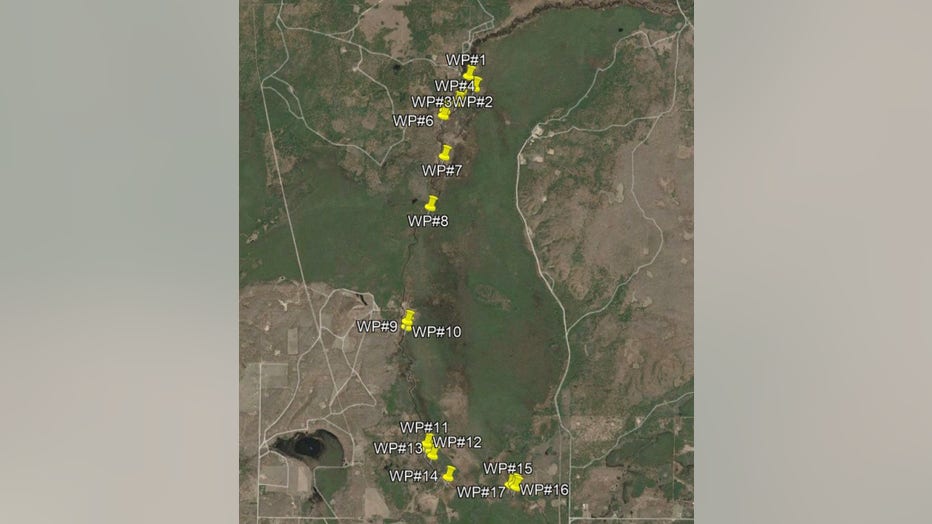Beaver management rules of Michigan trout fisheries draws critics after DNR revises policy
(FOX 2) - Trout fishing enthusiasts in northern Michigan are calling on the Department of Natural Resources to revise the state's policy for managing beaver dams disrupting streams where the species swims.
As beaver numbers climb in Michigan, so are their interactions with people and the spaces where they live and recreate.
Removing a nuisance beaver or an obstructive dam is a streamlined process for most places in the state, with the DNR waiving the need to secure a permit in instances where they're almost certain to issue one, such as ones that could flood roadways.
But a reworked policy within the department makes it harder to remove beaver dams constructed at popular sources to fish trout like the Au Sable and Manistee rivers.
"(We) saw a policy that was reading as tightening down on trying to do more to promote beavers and increase scrutiny on fisheries' impairment at a time when everything should be the opposite," said Bryan Burroughs, executive director with Michigan Trout Unlimited.
The updated policy mostly had to do with the DNR's internal reworking of how it addressed beaver impacts on trout streams. Wildlife and fisheries staff met in 2023 and released the updated decision tree for determining if a beaver should be removed.
Critics of the policy argue the revision takes away decision-making from fishery biologists, and subsequently prioritizes beaver populations over trout numbers.
"If it's an in-stream dam, removing the dam should rest with fisheries biologists," said Paul Rose, who leads the Upper Black River Council.
When beavers build dams, they obstruct passage of fish while warming nearby waters. Because coldwater trout are extremely sensitive to temperature changes and intolerant of waters exceeding 70 degrees, a proliferation of beaver structures threatens trout fisheries, Rose said.

Beaver structures identified along four miles of the Upper Main Branch of the Black River in the fall of 2024. Paul Rose of the Upper Black River Council cited research that found this to be four times too many dams for coldwater fish species. Photo
Both Rose and Burroughs spoke up about the issue during the Natural Resource Commission meeting in November. They argued management practices should reflect the diverging trends of fewer pressures on beavers and a growing number of stressors on trout.
They pointed to multiple segments of cold water streams blocked by a growing number of dams blocking passage for fish.
With recreational trapping declining due to the falling price of their pelts, there are fewer specialists removing beavers in Michigan. Without a predator like wolves who were extirpated from the lower peninsula, beaver populations have begun climbing.

Beaver structures identified along the North Branch Manistee River. Bryan Burroughs said the DNR has found trout abundance declines the further downstream one goes. Photo via Bryan Burrough presentation.
But in rewriting the policy, the DNR said its fishery and wildlife staff were aligned in the new framework.
"Both sides agreed to this all the way up the chain where we feel it's a fair and solid approach for addressing these issues," said Cody Norton, a large carnivore biologist with the DNR.
There are also fewer disagreements relating to permit requests than in the past and the DNR left open the possibility for an annual review of its new rules.
Norton added the point of contention from trout advocates relates to an "extremely narrow" purview for applying for permits. This year, only two permits were requested and issued for removing beaver dams that were threatening coldwater trout streams.
It's unclear how many beavers live in Michigan, but by monitoring harvest and mail surveys the DNR confirms that their numbers are growing. There are other reasons beaver numbers are climbing - they also have more available food.
Following periods of logging of Michigan's old growth forests, many northern regions are increasingly made up of younger timber species, which beavers prefer when choosing where to build a den.
Due to the beaver's destructive nature, interactions between them and people are likely to continue.
Advocates hope that policy from the DNR reflects the growing need to prioritize certain species before they become bigger problems.
"We're not contending this has ruined fisheries, we're just trying to get ahead of the curve," Rose said. "If this is left unaddressed, it will result in the decline of brook trout fisheries.


